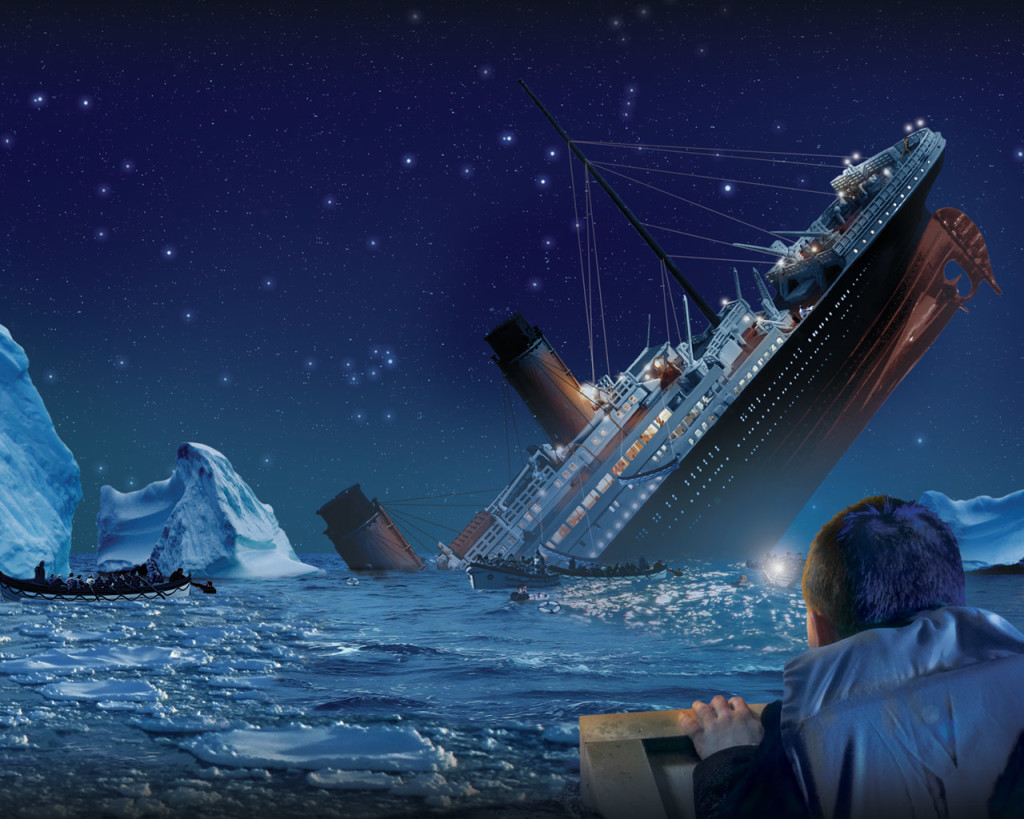
Source of image
Considered the finest vessel of her time, the RMS Titanic was known as a “Ship of Dreams”. Designed and built with care by an army of engineers, ship builders and workers, she was the largest ocean liner afloat during her time.
Her sinking a century ago on 15 April 2012 left an indelible mark in the collective consciousness of millions around the world. More than 1,500 perished in the freezing North Atlantic arctic waters, dragged down to the icy bottom after hours of struggling fatigue.
Imagine for a second that we’re surviving management consultants on that ill-fated liner built in Belfast, Ireland. Taking that first person perspective, what could we have shared about the mistakes leading to it’s downfall? What lessons in leadership and management can we learn from the greatest maritime disaster in history?
Lack of decisive leadership
First, decisive leadership was lacking during the time of crisis.
Captain E.J. Smith, the guy responsible for steering the ship and bringing it from Southampton to New York, was a retiree. He wasn’t trained to handle a crisis or emergency.
Under a lot of pressure to succeed in this maiden voyage across the North Atlantic, he couldn’t act decisively or think straight when push came to shove.
Records showed that he ignored the warnings from his crew until it became too late to avoid them. By avoiding the sordid facts, he led his crew and the entire ship to an almost inevitable collision course.
Plastering over the problem
Instead of grabbing the bull by the horns, the leadership of the ship chose to plaster over the problem.
I recalled a scene from the movie “Titanic” where the musicians were told to continue playing even though it was clear that the ship has hit something. Pretending that nothing has happened may be a comfortable course of action, especially for the rich and famous on that ship. However, it isn’t a wise move when the ship was doomed for failure.
Ignorance isn’t bliss. Especially when you are in charge of a massive organisation.
Bloated bureaucracy
It was also obvious that size does matter – although unfortunately so in a negative fashion.
Being the bloated organisation that it was, complete with the various layers of hierarchy, the Titanic couldn’t respond quickly to an emergency. Rules, policies, procedures, protocols needed to be followed.
By the time messages got from the bottom to the top or vice versa, it was too late for any corrective action to be taken.
Inadequate crisis management
Because of the complex web of bureaucracy in the Titanic, warning signs from the ground crew failed to reach the top. Disaster then became imminent.
Crisis management and communications was absent on the garguantuan vessel. Everybody ate, drank and made merry. Many danced to the tunes of minstrels specially engaged for the occasion.
Without a systematic approach of relaying messages from danger points to decision makers, preventive action couldn’t be taken early enough.
Untrained and incompetent staff
The Titanic also lacked the right talents and capabilities amongst its crew to succeed in its mission.
If you look at the composition of its employees, few of them were actual sailors or seamen. The colossal cruiser had almost 900 staff. However, only 66 crew were on Deck as Officers, Masters at arms, Storemasters and able bodied seamen. These were the only well-trained sailors on board the ship.
The majority were land lubbers: 325 in Engine (Engineers, Boilermen, Firemen and Electricians), and 494 in the Victualling department (Stewards, Galley, Restaurant, Musicians and Post). Many of them were inadequately trained or ill equipped to handle maritime emergencies.
Overconfidence in technology
An over reliance on technology and automation alone may have also led to the ship’s downfall.
Boasting a who’s who list of experts behind the architecture, engineering, design and building of the Titanic, the passengers on board the Titanic thought that the Titanic could live up to its namesake as “the ship that would not sink”.
This bravado by the ship’s management led to the under provision of life boats. The failures to do led to the tragic deaths of many of its passengers.
Absence of anticipation
Ultimately, a key reason leading to the Titanic’s demise was the leadership’s woeful lack of detailed preparation.
This lack of meticulous anticipation led the management of the ship to ignore what laid below the surface. Lacking the necessary expertise on board, the crew could not discern that the bulk of the iceberg was hidden beneath the ocean surface. This led to the infamous ripping apart of the ship’s hull as it grazed and crashed through the hard and razor sharp claws of ice that fateful night.
What other failures in leadership could we discern from the Titanic? I’d love to hear your thoughts.
To relive the experience of being on board the “ship that could never sink”, do check out James Cameron’s wonderful movie “Titanic” (now in 3D) as well as the brilliantly designed “Titanic: The Artifact Exhibition” at the Art-Science Museum. Both shows are ending soon so do hurry!

One Comment